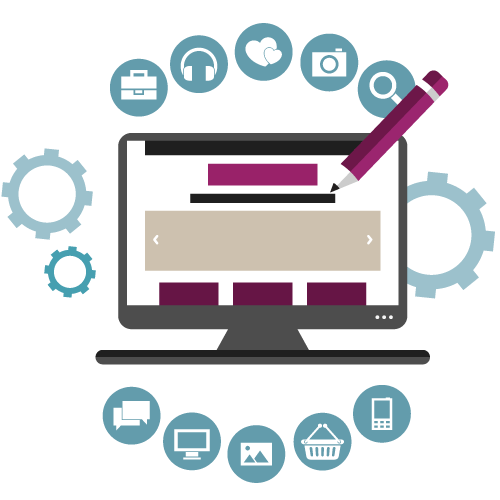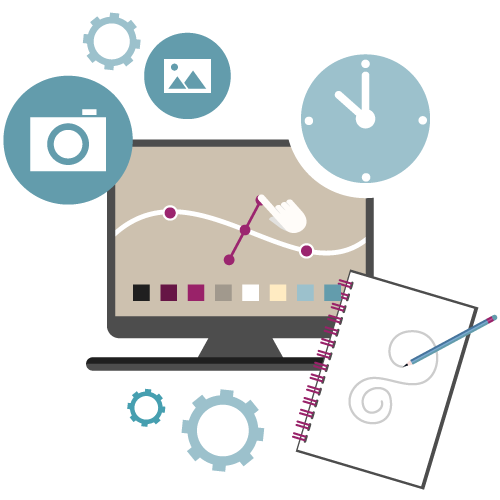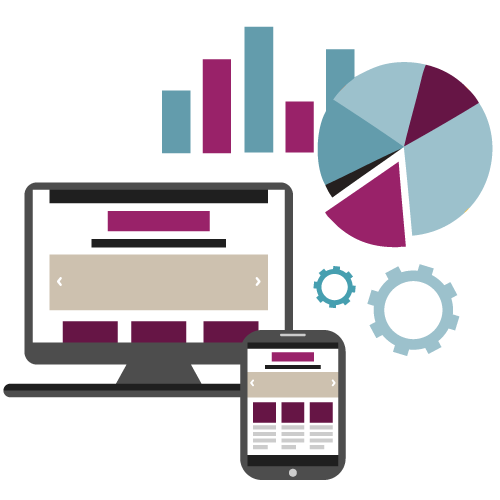


In today's digital marketplace, web design can make or break business opportunities. Your website often one of the first ways your prospects will interact with your brand, and as a business owner or marketing manager, you want to capture prospective clients attention and keep it. Websites with too much cluttered information, not enough information, difficult navigation, poor organization, etc. will cause the average person to leave your site within less than a minute. This means you have one minute to build trust and provide value. Whether you're creating your own Wordpress, SquareSpace or Wix site, or working with a web designer, here are 3 things you should know before you get started.

Web design can be time intensive. In addition to conceptualizing and creating the layout and graphic elements, a web designer codes the architecture of the website.
With so many elements to build, early planning is imperative. Mind-mapping visual priorities and site functions with your client is a critical first step that will reduce the amount of heavy iterations approaching your launch. In addition to functionality, site design often involves adhering to or creating a visual system that is cohesive with other branded assets--which can be an extensive discovery process on its own. So, be sure to plan early and plan well.

The more compressed your images are, the faster they will load on a website. The higher resolution they are, the more beautiful and crisp they will look on high resolution screen displays.
Traditionally, web images have been manually set at actual pixel dimensions based on the screen resolution to ensure they are displayed quickly and proportionately across all browsers. The rule that web images need to be set at 72dpi is irrelevant to how web browsers read HTML code. With incremental improvements to hardware and software processing, website loading time is becoming less of a frustration.
Alongside increasing computing and bandwidth capabilities, resolution of images produced on cameras and smartphones is increasing. Although today’s responsive web designers don’t need to compress their images to display at a single actual width, there is still something to be gained from compressing your images to the pixel width of the largest responsive display to reduce file size--more space and quicker load times. In other words, you may not need to design your website using 4k photos, even if your smartphone is capable of capturing them.

You’ve designed and launched your website. Pop some champagne and celebrate this milestone. Notice I said milestone, not end destination. You can review your site traffic with analytics tools, such as Google Analytics, Mint, or CloudFlare.
Now that your site is live and capturing data about your visitors, their primary demographic, the devices they are using, the time they are spending on your website, etc, you can start using this information to improve your sites performance and user engagement.
Is your audience more often viewing your site on a mobile device or on a desktop computer? How can you predict the needs of a mobile user and simplify the design of your page so that the mobile user views only what is relevant to that experience?
Websites edits, unlike edits to printed materials, are much more fluid. With free access to analytics and AB testing tools, frequent iteration to improve user experience is something all web designers should consider.
Don't let pre-existing templates cramp your style. Although templates can be great time savers and solid starting points, sometimes fitting your content into a pre-existing template just doesn't work. Think outside the box, research inspiration and competition, and gather feedback from others. Now, go build something beautiful.
When I'm not designing for clients, I love to have creative discussions about purposeful design. I've recently started a YouTube channel, where I hope to inspire, motivate, and collaborate with other creatives and businesses who need help with establishing art direction and creative strategies. Check out a few of my recent videos below!